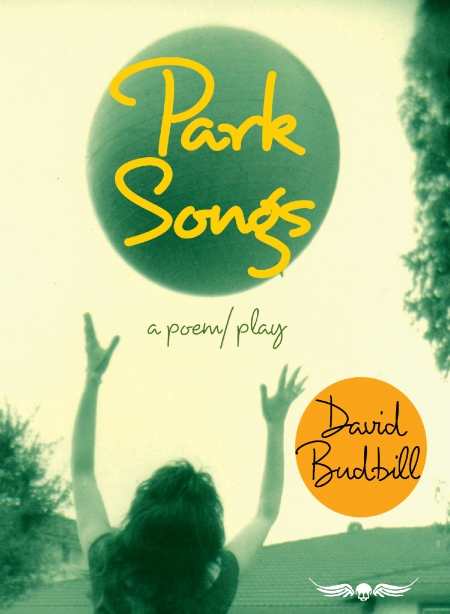Park Songs
A Poem/Play
David Budbill’s Park Songs is a collection of dramatic monologues, dialogues, and poetic choral pieces spoken by characters who frequent a city park. These people know each other, whether through intimate relationships or by simply seeing one another there often. The soliloquies and verbal interactions, presented in the course of one day, provide insight into the variety of personalities at work and force readers to reflect on how much we can know—and learn—through our discussions. Also at issue is how much can be misunderstood.
Indeed, some of the most fun and fascinating parts of this book are the misunderstandings. There’s Isaiah, the street preacher, who urges people to “Praise Wow” and repeats a nonsense prayer that he says comes from the Apostles. It begins, “We jeep in one Wow, Good galonty, from whom an elver amerdang.” There’s Fred, the ladies’ man, talking with Judy, a stranger who misinterprets his questions and confusion as subtle digs regarding her use of perfect grammar. There are Nancy and Judy, partners who are quarreling because of the way one of them says “OK.”
David Budbill is a poet and playwright known for his accessibility and sense of playful humor, and those two aspects are evident in this collection. The audience for this book is not so clear, however. Billed as a poem/play, the hybrid nature of this book requires more guidance for readers not accustomed to reading straight dialogue on the page; and, unfortunately, much of this guidance doesn’t appear until the afterword. In the afterword, Budbill explains his hopes for having the play staged, and how the free-form nature of the book enables theater companies to pull out a few monologues or dialogues to stage one-act plays, if staging the entire piece doesn’t suit their needs.
Additionally, readers must be prepared for a play with very little in the way of stage direction or organizational schemes common to playwriting. In this aspect, the pieces are more like poems. Readers are often told at the top of the page who is speaking (i.e., Kathy, Jesse, and Shawn), but there are no labels to differentiate the characters. Instead, the font changes from regular to bold, and the author drops hints in the dialogue to help make the characters clear.
The free-from-conventions nature of the book might be part of the point—that readers should have fun interpreting these voices on the stage. A little explanation of the organizing principles up front, however, would help ensure that community theater players keep the book in their hands from start to finish.
Reviewed by
Jennifer Fandel
Disclosure: This article is not an endorsement, but a review. The publisher of this book provided free copies of the book to have their book reviewed by a professional reviewer. No fee was paid by the publisher for this review. Foreword Reviews only recommends books that we love. Foreword Magazine, Inc. is disclosing this in accordance with the Federal Trade Commission’s 16 CFR, Part 255.

